
Conversation

🥳 Feedback Received!
Thanks for taking a moment to share your thoughts — it genuinely helps us make each chapter sharper.
What happens next:
- Your feedback goes straight to our product team.
- We’ll use it to refine lessons, clarify examples, and make the program even more useful.
Appreciate you helping make this program better for everyone.
Ready for your next challenge? 👇
Types of Amazon Ads
Amazon has a wide range of ad types. If you visit their ad platform, you’ll see what we mean!
It makes sense—after all, Amazon spans everything from Fire TV to Twitch to Alexa to IMDB (yes, they own IMDB) to Whole Foods. They’re not just the biggest product retailer outside of China. They’re also a whole lot of products themselves.
We won’t get into each ad type, since our focus here is on giving you the core information you need to launch an effective, high-ROI Amazon ad strategy. Instead, we’ll focus on the three types of sponsored ad.
Sponsored product ads
We recommend starting out with sponsored product ads, which appear in search results and on product pages. They’re how you 1) attract customers who are shopping for the kinds of products you sell, and then 2) drive them to your product page.
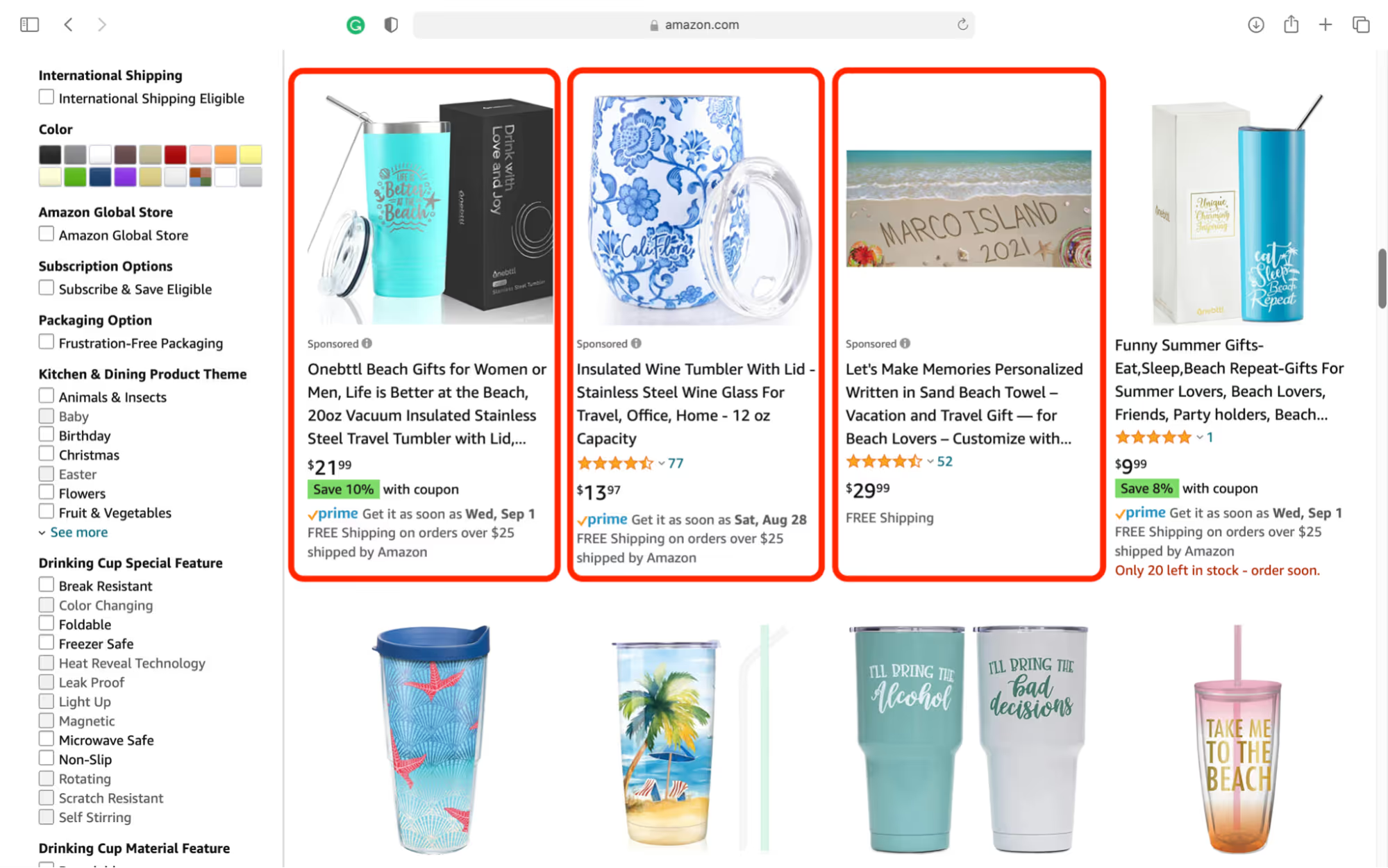
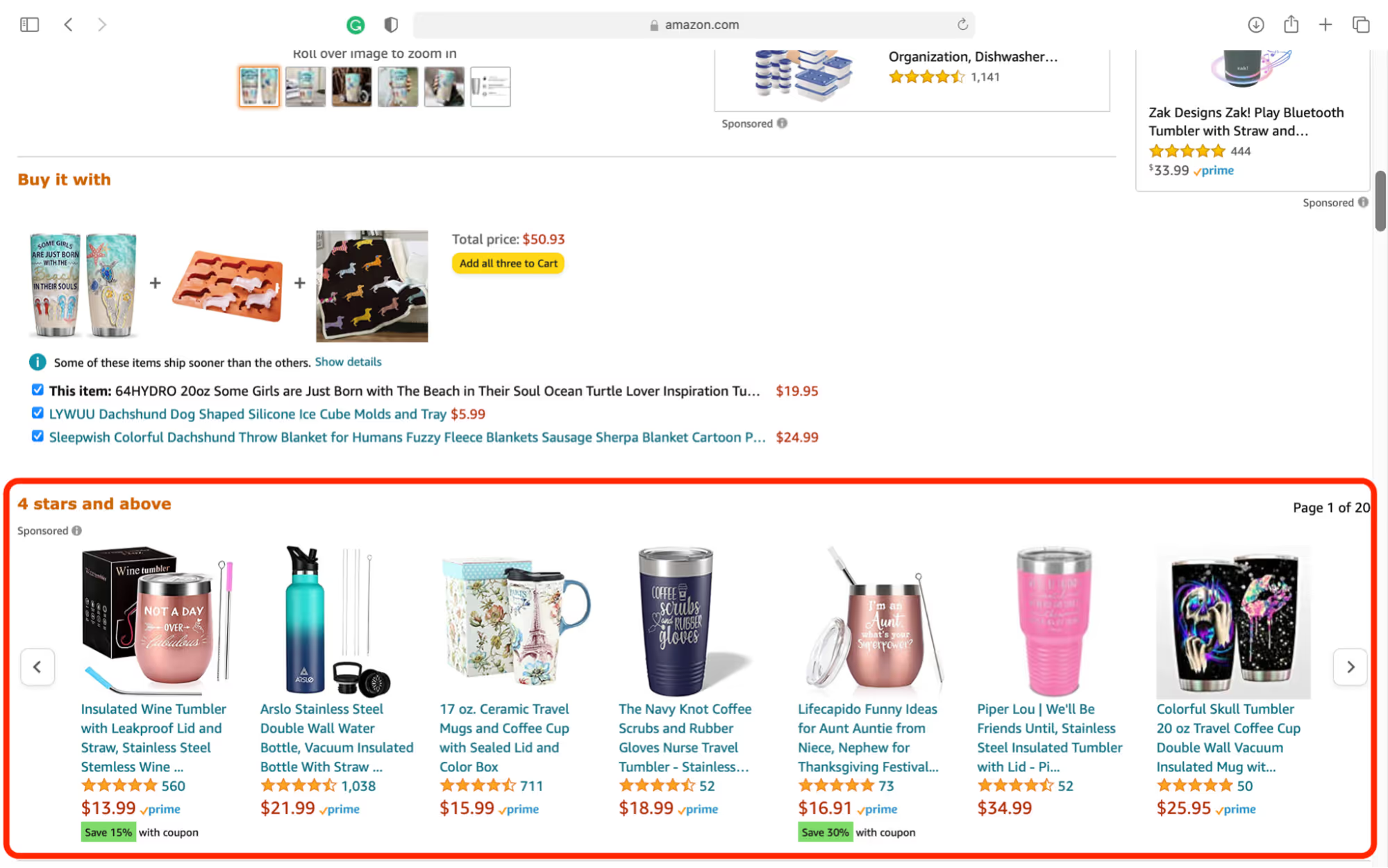
Sponsored product ads appear for shoppers who are:
- Entering search terms that are related to your product
- Viewing products that are similar to yours
They appear at key stages in the buyer journey: search, research, and purchase. Even after you start running other ad types, we recommend continuing to put most of your ad budget behind sponsored product ads.
It pays to be very tight on Amazon, with focused single-product campaigns. Sponsored product ads are great for that. Also, as you’ll see when we get into launching a campaign, an effective Amazon ad strategy starts with loose keyword targeting on sponsored products and gets more focused over time.
Remember how “Focus Is Key” was one of our guiding principles for startup growth? That doesn’t just apply to your growth strategy. It applies to individual channels too.
Sponsored brand ads
Whereas sponsored products are for individual products, sponsored brands are for groups of products. They feature a logo, custom headline, and selection of usually three products. They appear at the top of search results.
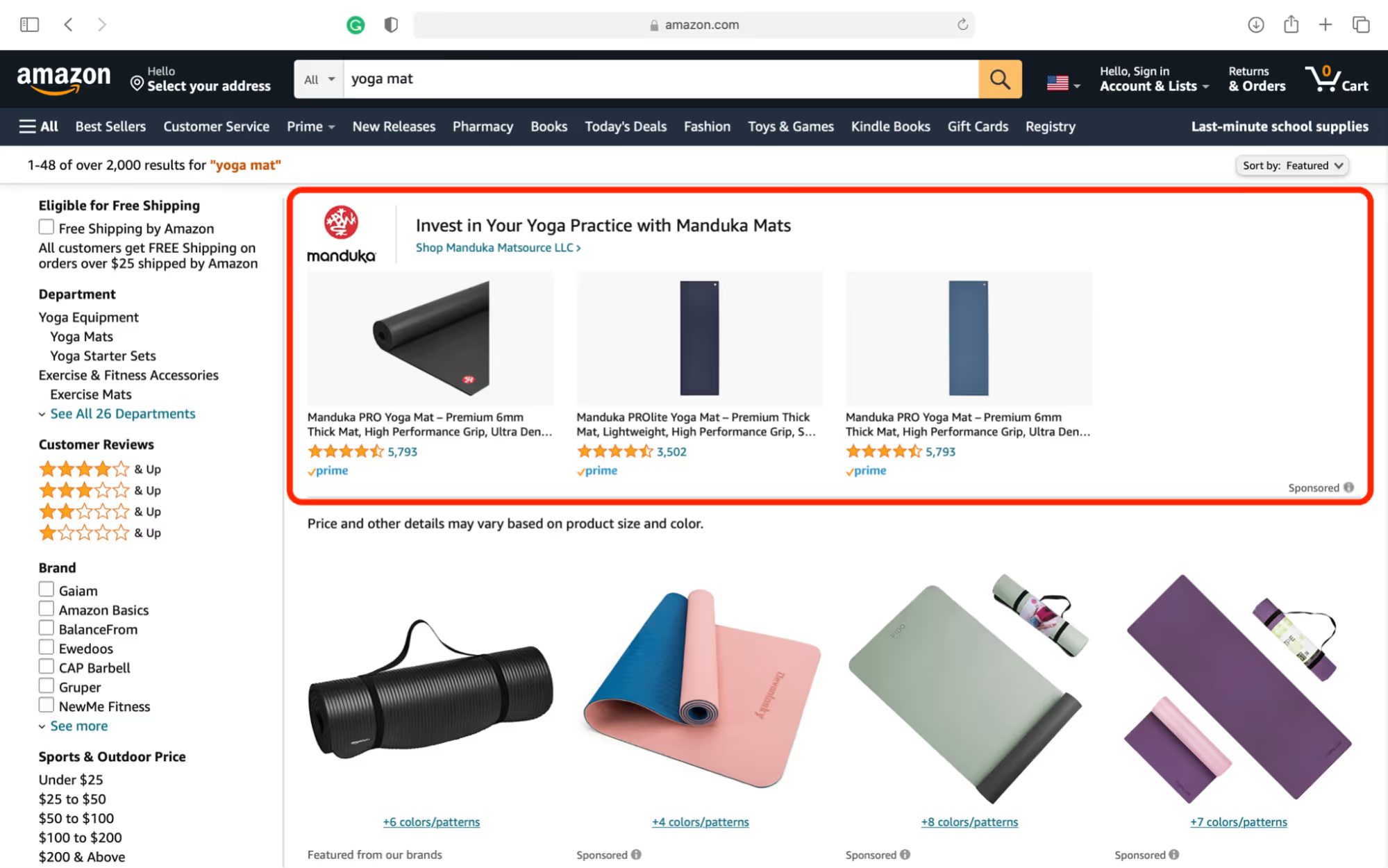
Clicking a product in the ad takes you to that product page; a click elsewhere in the ad takes you to a custom landing page or Amazon Store. We'll explain Stores—online brand storefronts—more in “Moving into Brand and Display Ads.”
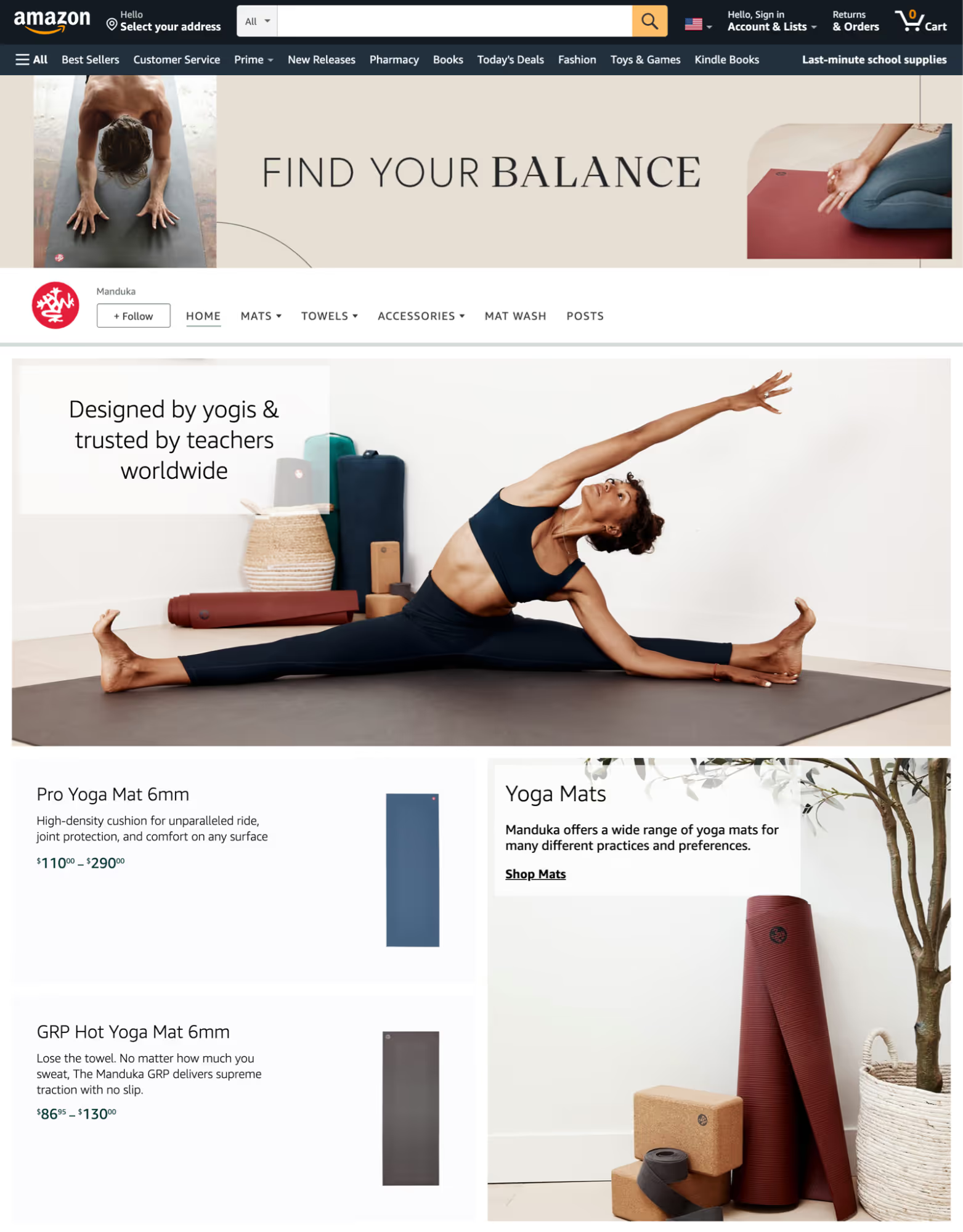
Unlike sponsored product ads, some creative is required for brand ads. For standard brand ads, that just means writing a short headline. But you can also launch sponsored brand videos, which require more creative involvement. It might be worth it: Because of the “early mover” advantage and their novel look in search results, sponsored brand videos are likely to have high-converting traffic for non-branded keywords.
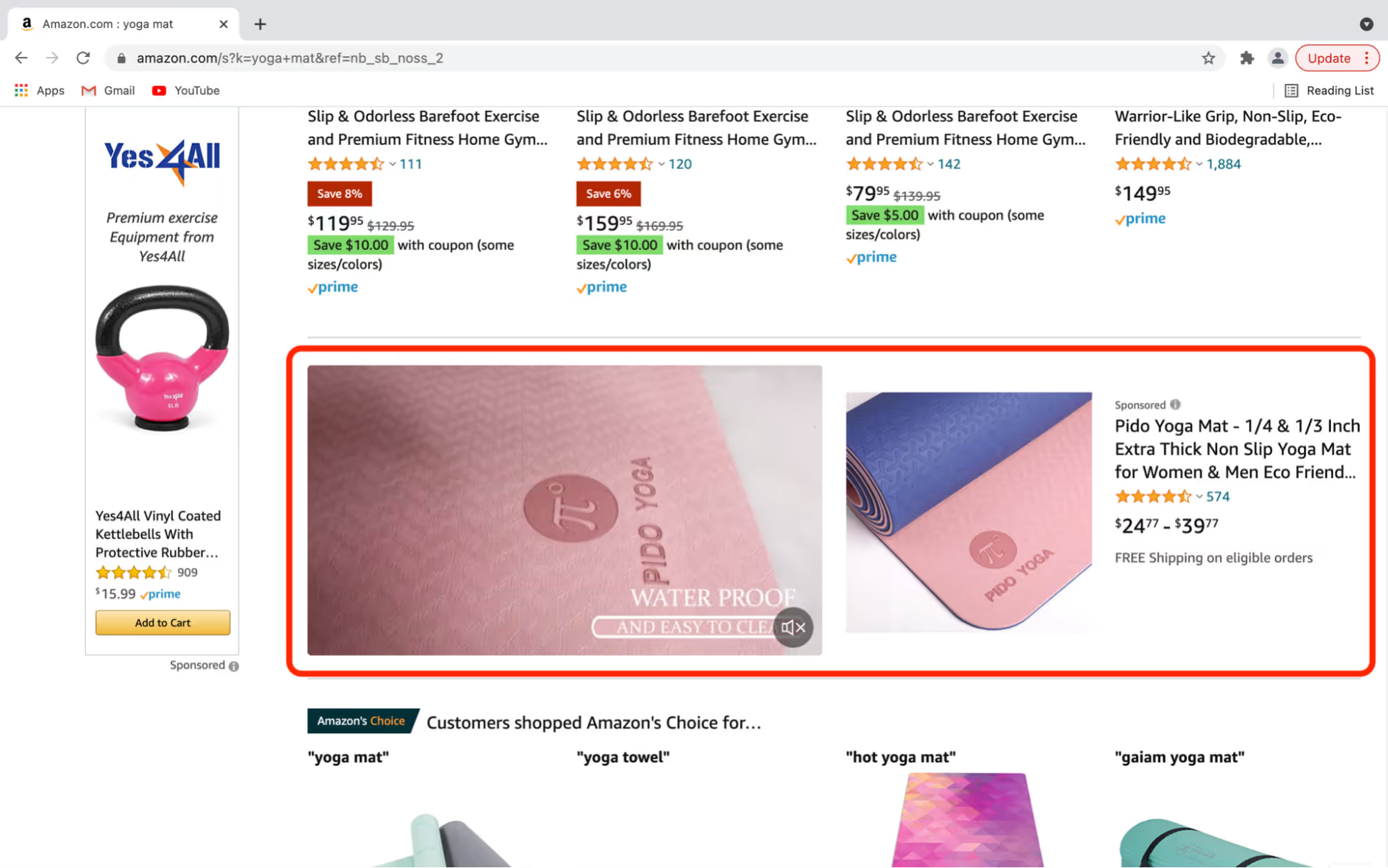
Sponsored display ads
Sponsored display ads are Amazon’s multi-channel and remarketing ad type. They’re the only sponsored ad type with audience targeting, which you can use to reach shoppers who have viewed your products or similar ones, bought your products, or used search terms that are relevant to your products.
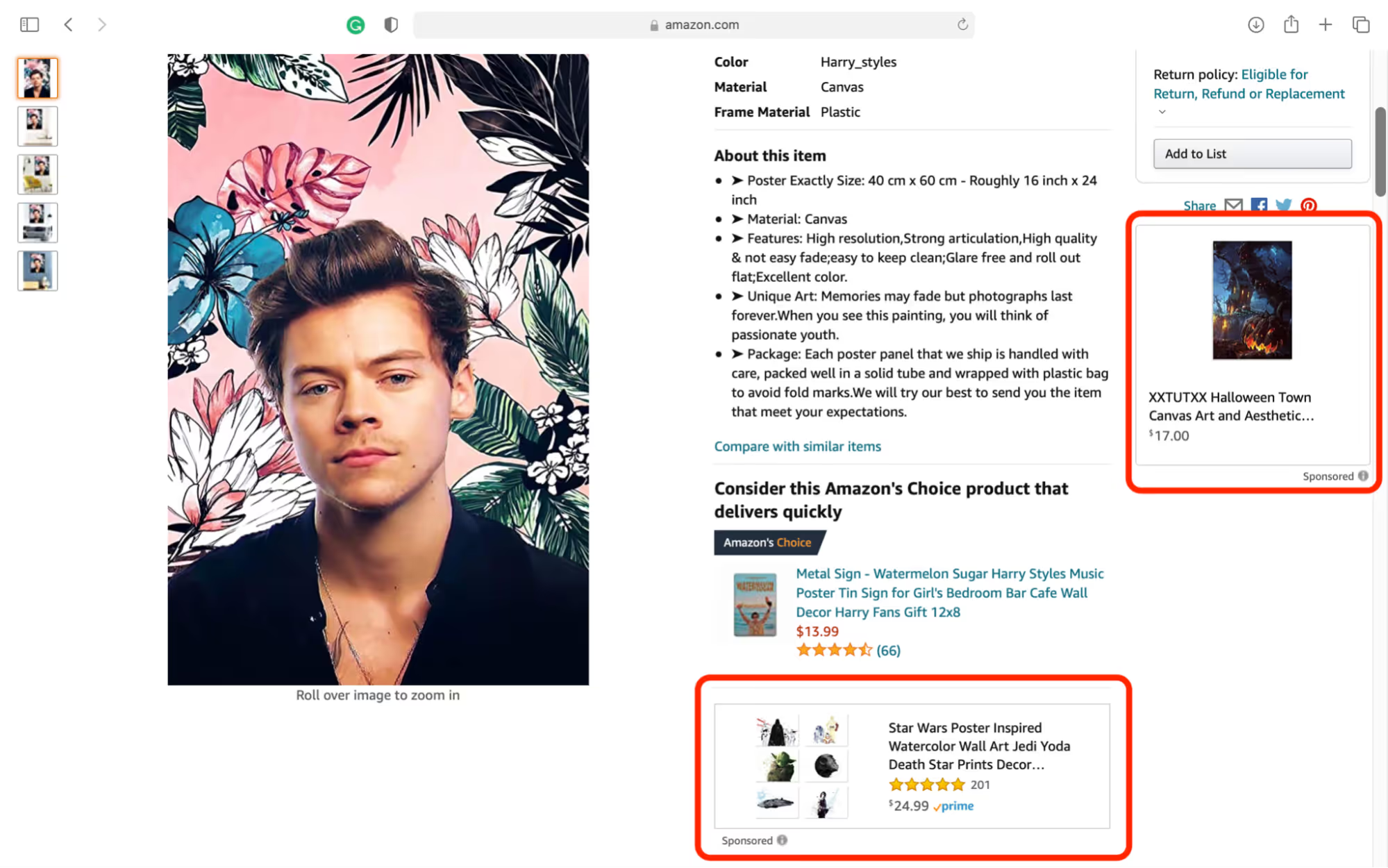
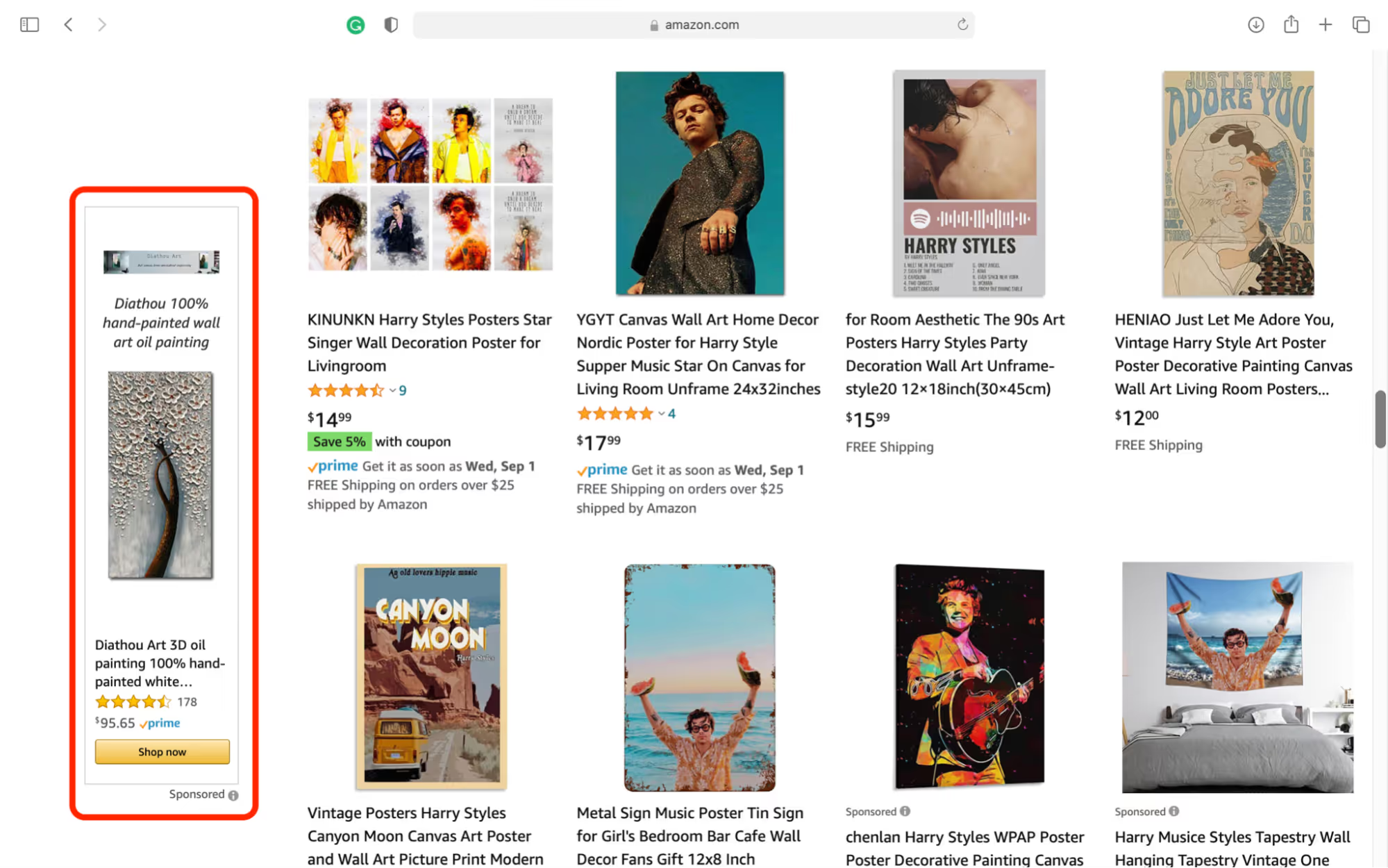
One downside of Amazon ads—and PPC ads in general—is that you don’t know who your customers are. Their direct relationship isn’t with you. It’s with Amazon. Sponsored display ads don’t solve that problem, but through audience targeting, they do bring you closer to direct customer outreach.
Besides targeting type, the scope of sponsored display ads expands in other ways too. On Amazon, you’ll come across display ads not just alongside search results, but in prime real estate spots like right below the buying options on a product page. Display ads can appear off-site too, for remarketing from third-party sites.
Sponsored display ads are powerful tools, but given their complexity, we recommend holding off on them at first. We’ll focus instead on launching and optimizing your sponsored product campaigns. That's how most startups find success with Amazon ads.
Later in this module, we’ll explore brand and display ads in more detail.
Ad types and targeting types
In the ad type table above, there’s a column for targeting types. Here’s what we mean by those:
- Keyword targeting: Choose which keywords your ads will appear for, based on the search terms shoppers use.
- Product targeting: Target ads based on products or categories. Product targeting encompasses targeting by ASIN, price, brand, star rating, and Prime eligibility.
- Audience targeting: Audience targeting includes views remarketing (for retargeting), in-market (for recent shoppers in a particular category), lifestyle, interests, and life events (e.g., preparing to go on a trip).
On the next page, we’ll discuss another targeting type: manual vs. automatic.


